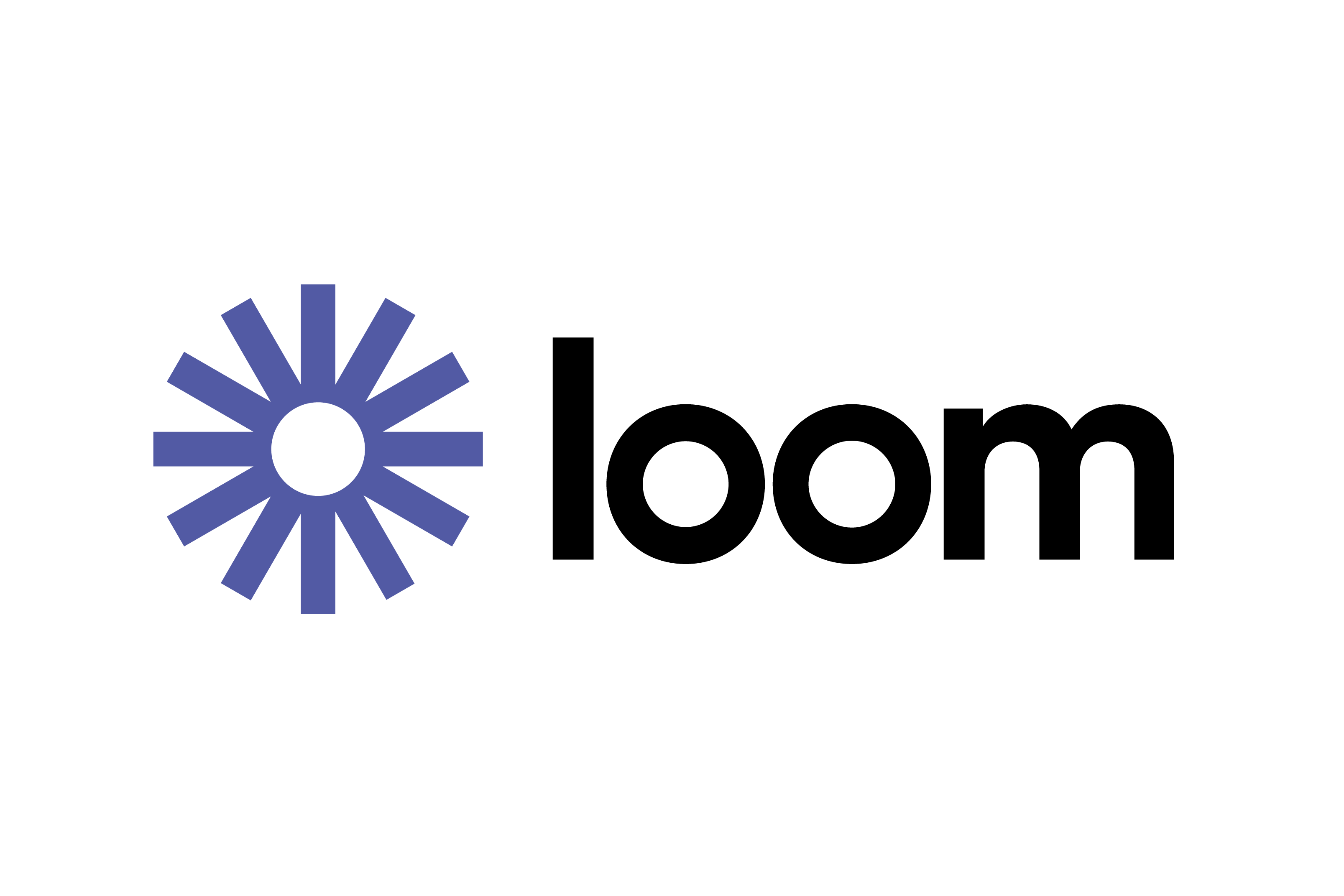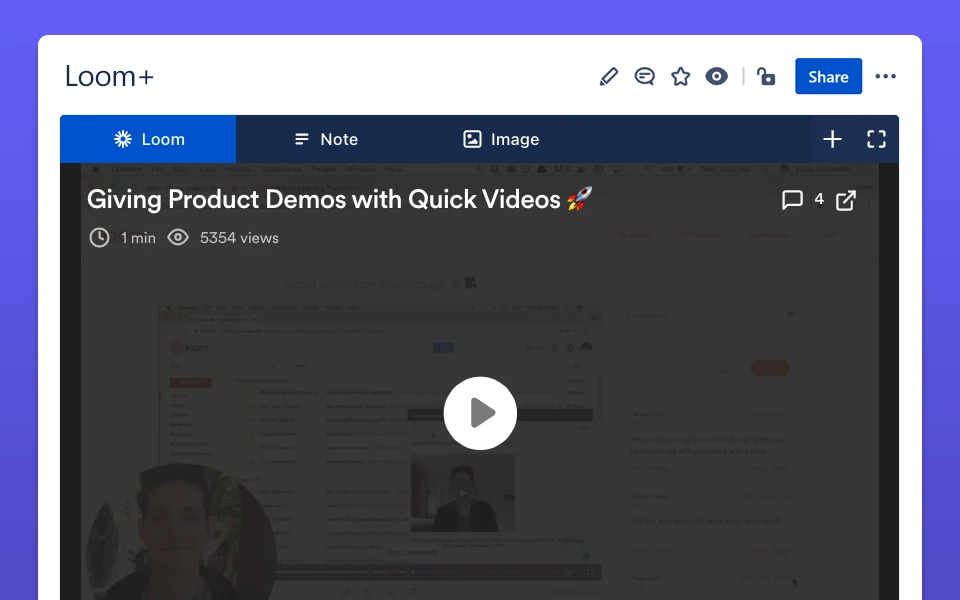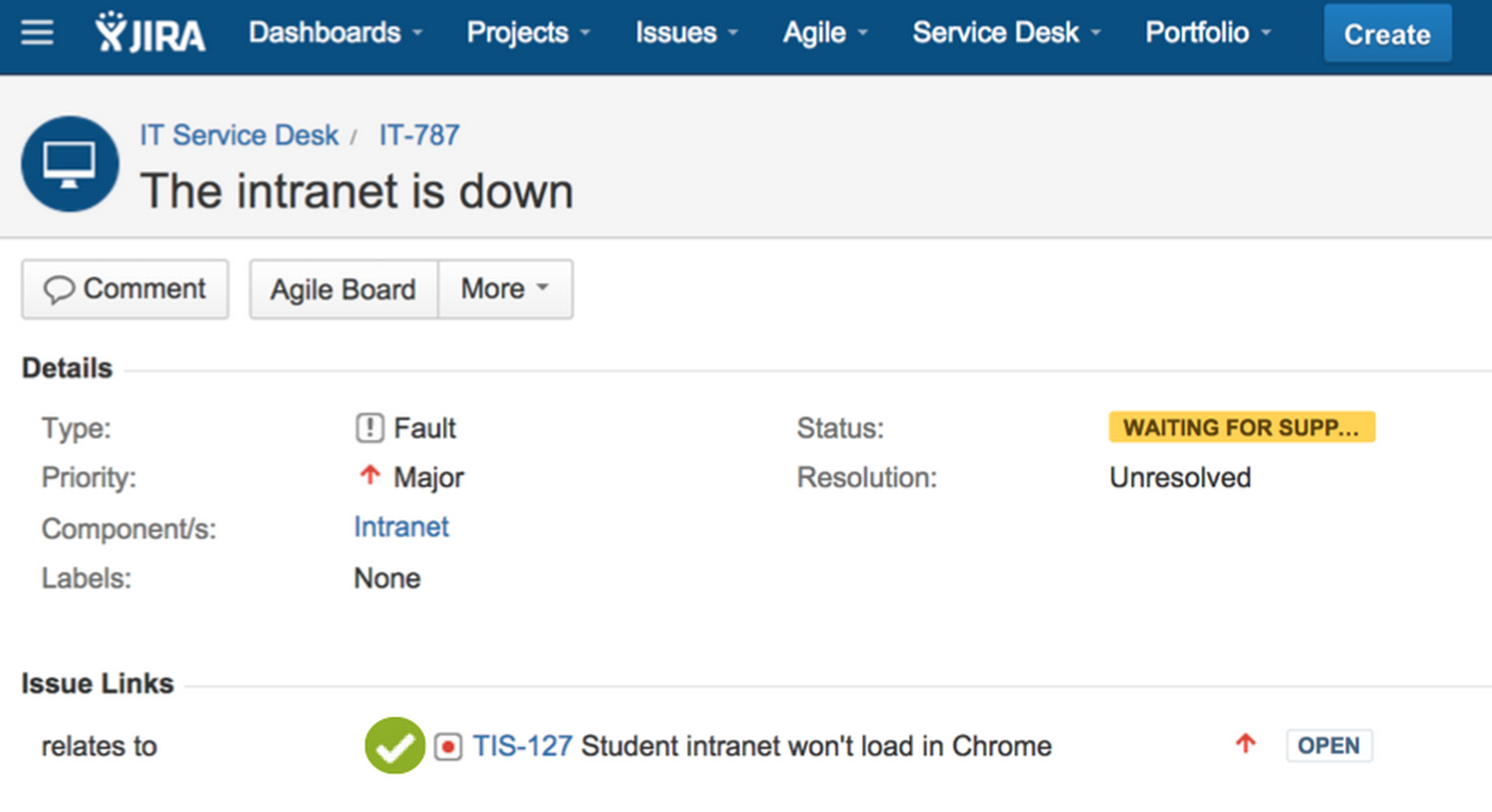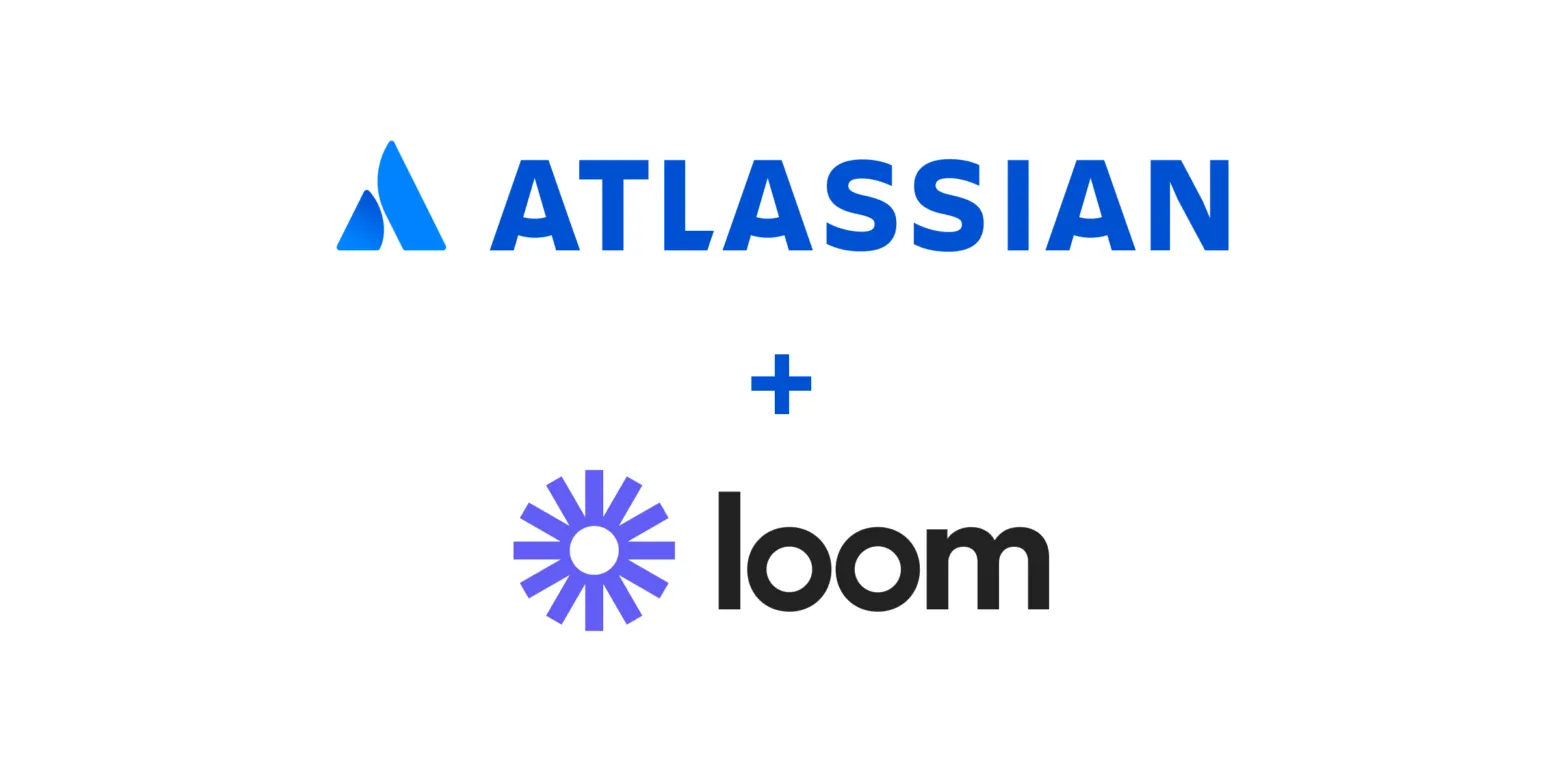Atlassian, the company behind popular software development tools like Jira and Confluence, has acquired Loom, a leading screen recording and collaboration platform. The acquisition, which was announced on October 12, 2023, is valued at $975 million.
Loom is a video messaging platform that allows users to record their screens and cameras simultaneously, and then share the videos with others. Similar to other Screen Recording tools like ScreenApp or Vidyard, Loom is a popular tool for communication, collaboration, and training.
First off, What is Loom?
To those living under a rock, Loom is a Screen Recording tool designed for asyncronous communication. Users can start a recording can narrate their video, draw on the screen, and add annotations. When they are finished recording, they can simply click the stop button and Loom will automatically upload the video to the cloud.
Loom videos are easy to share with others. Users can share a link to the video, embed it in a website or blog post, or even send it directly to someone’s email address. Loom videos can also be viewed on any device, including smartphones, tablets, and computers.
Loom is a powerful tool that can be used to improve communication, collaboration, and training. It is easy to use, versatile, shareable, and accessible.
Here are some of the things that Loom is:
- A tool for asynchronous communication: Loom videos can be watched at any time, convenient for remote teams and asynchronous communication.
- A feedback tool: Loom can be used to provide feedback to team members, customers, or students in a more engaging and personalized way.
- A tutorial tool: Loom can be used to create tutorials on how to use a product, complete a task, or solve a problem in a clear and concise way.
- A presentation tool: Loom can be used to record presentations that can be shared with your audience, even if they are unable to attend in person.
- A knowledge base tool: Loom can be used to create video knowledge base articles that your customers or team members can watch to learn more about your products or services.
Here are some of the things that Loom is not:
- A video knowledge base for recording meetings: Loom is designed for creating short, digestible videos that can replace meetings, not for recording and storing long meeting recordings.
- A tool for making long videos digestible: Loom is not designed for editing and polishing long videos. It is focused on creating short, to-the-point videos that are easy to watch and understand.
- A replacement for all meetings: Loom is a great tool for replacing some meetings, but it is not a replacement for all meetings. Some meetings, such as brainstorming sessions or team retrospectives, are still best done in person or over video call.

Loom
Why did Atlassian buy Loom?
With that out of the way, who is Atlassian? Atlassian is a software company that builds tools to help teams collaborate and work more efficiently. Founded in Sydney, Australia in 2002, Atlassian’s products are used by millions of teams around the world, including NASA, Spotify, and Airbnb.
Atlassian’s flagship product, Jira, is a popular project management tool that helps teams track their work and progress. For teams already using Jira, integrating video content with Loom can enhance collaboration by allowing clear, visual updates directly linked to a Jira task. Furthermore, Jira offers various reporting features, including the Jira hill chart, which provides a visual representation of project progress and helps teams identify potential roadblocks. Additionally, those looking to conduct deeper analysis or share issue lists externally can easily export Jira issues to CSV for flexible reporting and data manipulation. Other popular Atlassian products include Confluence, a team workspace for documentation and collaboration, and Trello, a visual collaboration tool for teams of all sizes.
So why did Atlassian buy Loom?
- To expand its collaboration capabilities. Atlassian is known for its project management tools, such as Jira and Confluence. However, its collaboration capabilities have been limited in the past. Loom’s video messaging platform can help Atlassian to fill this gap and provide its customers with a more comprehensive collaboration solution.
- To reach a new audience. Loom has a strong presence in the education and customer support markets. Atlassian may have acquired Loom to expand its reach into these markets and offer its products and services to a wider range of customers.
- To integrate Loom’s technology into its own products. Atlassian may plan to integrate Loom’s video messaging capabilities into its own products, such as Jira and Confluence. This would allow Atlassian’s customers to create and share video messages directly from within their existing workflows.
- To eliminate a competitor. Loom is a leading player in the screen recording and collaboration market. By acquiring Loom, Atlassian has eliminated a key competitor and strengthened its own position in the market.
It is also worth noting that Atlassian was already a customer of Loom prior to the acquisition. This suggests that Atlassian was impressed with Loom’s product and saw the potential to integrate it into its own platform.

Atlassian Founders
The acquisition of Loom by Atlassian has the potential to benefit both companies in a number of ways:
How the acquisition helps Atlassian
- Expanded collaboration capabilities: Loom’s video messaging platform can help Atlassian to improve the collaboration capabilities of its existing products, such as Jira and Confluence. This would allow Atlassian’s customers to create and share video messages directly from within their existing workflows.
- New customer base: Loom has a strong presence in the education and customer support markets. Atlassian may be able to leverage Loom’s customer base to expand its reach into these markets and offer its products and services to a wider range of customers.
- Increased market share: Atlassian’s acquisition of Loom eliminates a key competitor and strengthens its own position in the screen recording and collaboration market.

An example of Loom inside Confluence
How the acquisition helps Loom
- Increased resources: Atlassian is a large and well-established company with significant financial resources. This will give Loom the resources it needs to continue to grow and develop its product.
- Access to Atlassian’s customer base: Atlassian has a large and loyal customer base. Loom will be able to leverage this customer base to reach a wider audience and grow its user base.
- Integration with Atlassian’s products: Loom will be integrated into Atlassian’s products, such as Jira and Confluence. This will make it easier for Atlassian’s customers to use Loom and will make Loom more valuable to its users.
The acquisition of Loom by Atlassian is a significant move that will have a major impact on the screen recording and collaboration market.
Increased competition: The acquisition of Loom by Atlassian will reduce the number of independent players in the screen recording and collaboration market. This will increase competition among the remaining players and could lead to lower prices and more innovation.
Increased consolidation: The acquisition of Loom by Atlassian is part of a trend of consolidation in the screen recording and collaboration market. In recent years, a number of smaller companies have been acquired by larger companies, such as Microsoft and Google. This consolidation is likely to continue in the coming years, as larger companies seek to expand their market share and offer more comprehensive collaboration solutions.
Increased focus on video messaging: The acquisition of Loom by Atlassian highlights the growing importance of video messaging in the screen recording and collaboration market. Video messaging is a more engaging and effective way to communicate than text or audio, and it is becoming increasingly popular among businesses and individuals.
Increased innovation: The acquisition of Loom by Atlassian is likely to lead to increased innovation in the screen recording and collaboration market. Atlassian has a proven track record of innovation, and it is likely to invest heavily in the development of Loom’s product. This could lead to the development of new features and capabilities that will benefit all users of screen recording and collaboration tools.
What does the acquisition mean for Loom users?
Loom users can be reassured that the product will continue to be supported and developed after Atlassian’s acquisition. Atlassian has a proven track record of supporting and developing the products it acquires. For example, Atlassian acquired Jira Service Management (formerly Jira Service Desk) in 2014 and has continued to invest in the product, adding new features and capabilities on a regular basis.

Look to Jira Service Desk to see how Loom may change
In addition, Atlassian has stated that it is committed to continuing to support and develop Loom. In a blog post announcing the acquisition, Atlassian CEO Mike Cannon-Brookes said that “Loom is a great product with a passionate team and a loyal customer base. We are excited to welcome Loom to the Atlassian family and to help them continue to grow and succeed.”
Loom users can expect to see continued development of the product, including new features and capabilities, as well as improved integration with Atlassian’s other products. Atlassian has a strong track record of innovation, and it is likely to invest heavily in the development of Loom.
Here are some specific examples of how Atlassian could support and develop the Loom product:
- Atlassian could integrate Loom’s video messaging platform into its existing products, such as Jira and Confluence. This would make it easier for Atlassian’s customers to create and share video messages directly from within their existing workflows.
- Atlassian could invest in the development of new features and capabilities for Loom. For example, Atlassian could develop a new AI-powered feature that automatically transcribes Loom videos.
- Atlassian could provide Loom with access to its resources and expertise. This could help Loom to improve its product and expand its reach into new markets.
It is still too early to say for sure what changes Atlassian will make to Loom’s product or pricing. However, there are a few potential changes that we can speculate about:
- Increased prices: Atlassian may raise the price of Loom, especially for business users.
- Reduced features: Atlassian may focus on developing Loom for its own customers and neglect the needs of existing Loom users. This could lead to reduced features or functionality for Loom users.
- Integration with Atlassian products: Atlassian may prioritize integrating Loom with its own products over other platforms. This could make it more difficult for Loom users to use Loom with their other tools and services.
- Loss of control: Loom users may lose control over their data and privacy after the acquisition. Atlassian may choose to collect and use Loom user data in ways that are different from Loom’s current practices.
It is important to note that these are just potential downsides. Atlassian has not announced any specific plans for Loom’s product or pricing. It is possible that Atlassian will avoid these downsides and that Loom users will continue to enjoy the same great product that they do today.
However, Loom users should be aware of these potential downsides and be prepared for the possibility that the product or pricing may change after the acquisition. They should also take steps to protect their data and privacy, such as backing up their Loom videos and reviewing Atlassian’s privacy policy.

Atlassian’s planned office in Sydney
What can Loom users do?
Loom users can do a few things to protect themselves from the potential downsides of the acquisition:
- Back up their Loom videos. Loom users should back up their Loom videos to an external drive or cloud storage service. This will ensure that they have a copy of their videos in case Loom makes any changes to the product or pricing that they do not like.
- Review Atlassian’s privacy policy. Loom users should review Atlassian’s privacy policy to understand how their data will be collected and used after the acquisition. This will help them to make informed decisions about how to use Loom.
- Consider using a different product. If Loom users are concerned about the potential downsides of the acquisition, they may want to consider using a different screen recording and collaboration product. There are a number of other products available on the market, such as ScreenApp
ScreenApp: A Great Alternative to Loom
ScreenApp is a homegrown Australian startup that is taking the world by storm. Founded in 2022 by a team of passionate entrepreneurs, ScreenApp is a screen recording and collaboration tool that is faster, smarter, and more innovative than anything else on the market.
ScreenApp is living proof that Australia is a breeding ground for innovation and creativity. Just like Atlassian, ScreenApp is a company that is changing the way people work and collaborate. ScreenApp is also a company that is committed to its Australian roots.
ScreenApp is a screen recording and collaboration tool that offers a number of advantages over Loom, including:
- Faster screen recording: ScreenApp can record your screen at up to 60 frames per second, resulting in smoother and more fluid recordings.
- Better AI: ScreenApp uses AI to automatically transcribe your recordings and generate summaries, saving you time and effort.
- Better summarization: ScreenApp’s summaries are more comprehensive and informative than Loom’s, making it easier to understand the key points of a recording without having to watch the entire video.
- More innovative features: ScreenApp offers a number of innovative features that are not available in Loom, such as the ability to record multiple screens at once, write commentary and use ChatGPT to talk to videos.
In addition to these advantages, ScreenApp is also more affordable than Loom. ScreenApp offers a free plan with unlimited recording time, while Loom’s free plan only allows for recordings of up to 5 minutes.
If you are a Loom user who is looking for a faster, more intelligent, and more affordable screen recording and collaboration tool, then you should definitely try out ScreenApp.
Here are some specific examples of how ScreenApp’s AI features can be useful:
- Automatic transcription: ScreenApp can automatically transcribe your recordings, saving you the time and effort of having to transcribe them yourself. This is especially useful if you need to create subtitles or closed captions for your recordings.
- Automatic summarization: ScreenApp can automatically generate a summary of your recordings, making it easier to understand the key points of a video without having to watch the entire thing. This is especially useful for long or complex recordings.
ScreenApp also offers a number of other innovative features, such as the ability to:
- Record multiple screens at once: ScreenApp can record multiple screens at once, which is useful for creating tutorials or demo videos.
- Create interactive videos: ScreenApp allows you to create interactive videos by adding quizzes, polls, and other interactive elements to your recordings. This is a great way to engage your viewers and make your videos more informative.
- Add captions and subtitles to your recordings: ScreenApp allows you to add captions and subtitles to your recordings, making them accessible to a wider audience.
If you are looking for a screen recording and collaboration tool that is fast, intelligent, affordable, and innovative, then you should definitely check out the comparison and try out ScreenApp.






